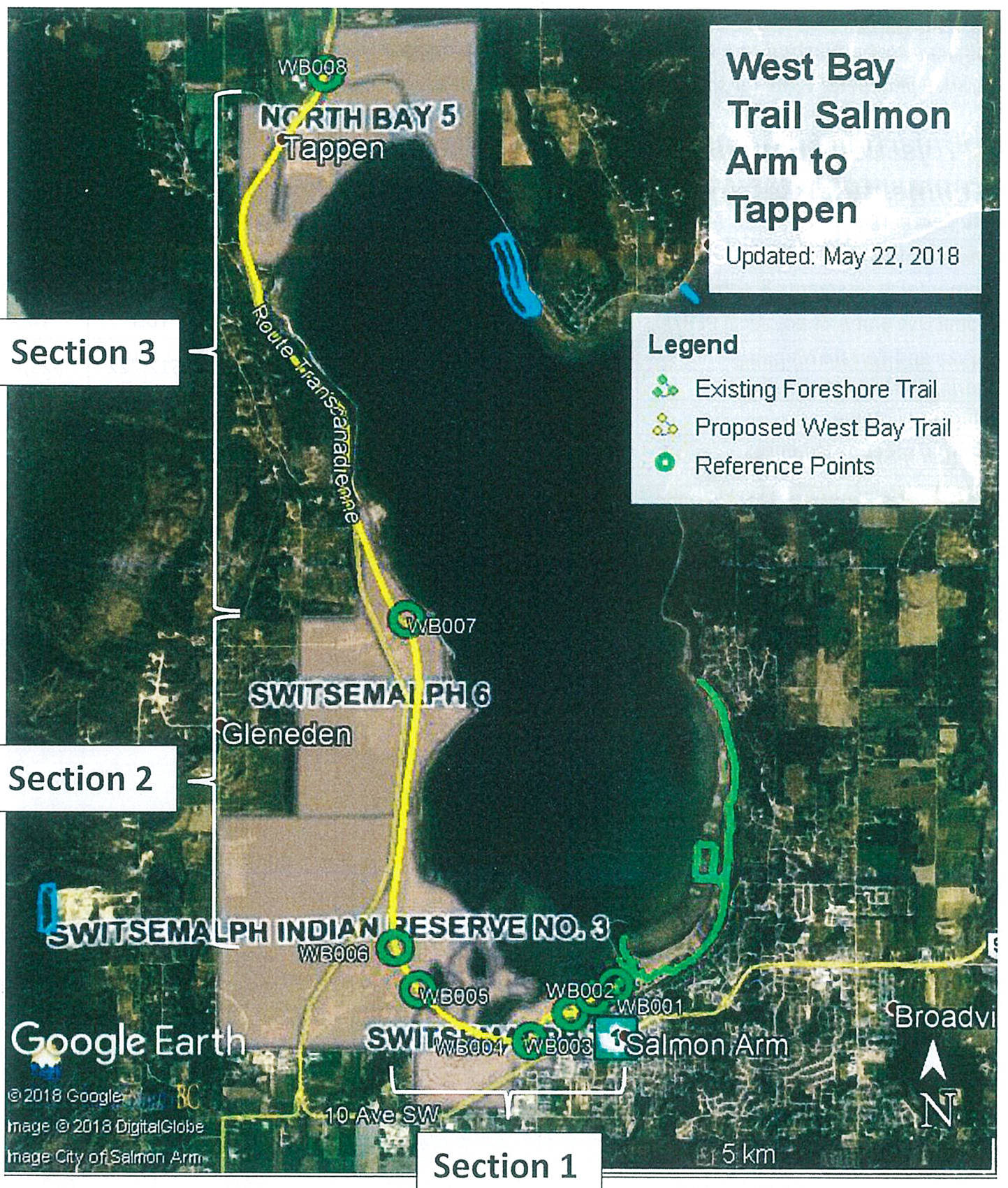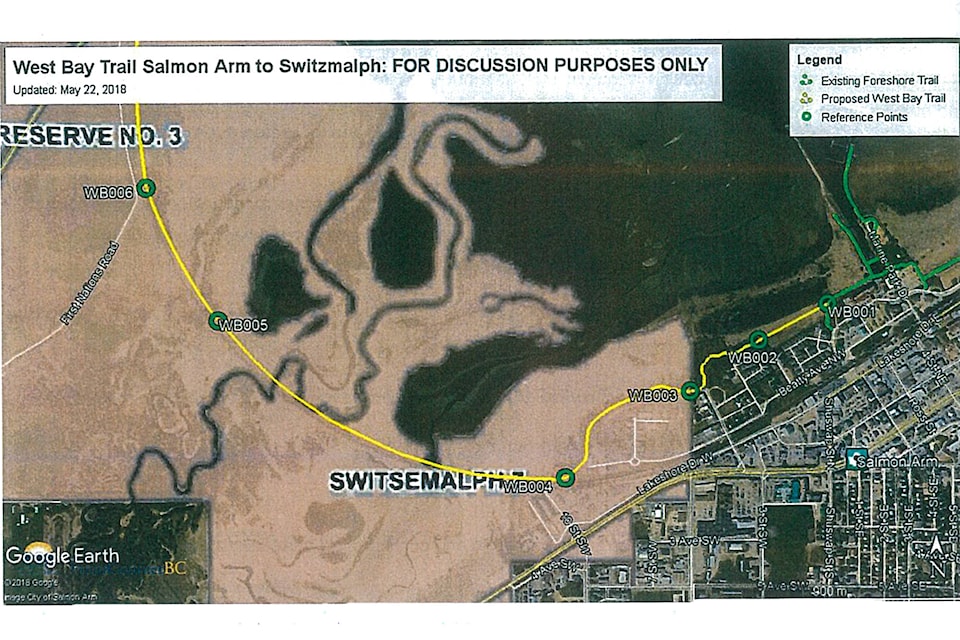Beauty and tragedy combine on the railway line between Salmon Arm and Tappen.
More than 40 people have died on the tracks that form a direct connection between Salmon Arm and First Nations lands to the west.
Given the choice, most First Nations people would rather take the shorter train route than take their chances on the busy Trans-Canada Highway.
Several groups are currently collaborating on three possible projects, but Neskonlith elder Louis Thomas wonders if a safe trail will be built in his lifetime.
With his heart shattered over the recent death of his sister Bonnie’s son, Jason, Thomas tearfully explains that his father and son both died on the tracks.
Related: Identity of man found dead by railway tracks released
Thomas has been trying to get support for a safe trail for at least 40 years. Talks with various groups and levels of government over many years have inspired moments of hope, but have never progressed beyond discussion, says Thomas.
In 2002, the Adams Lake Band commissioned a feasibility study on a multi-purposes pathway between Salmon Arm and the Adams Lake and Neskonlith reserve. Funding for the study was contributed by the bands, the City of Salmon Arm, SABNES and CP Rail.
As identified in the study, “the single most important factor in constructing the trail is safety,” says Shuswap Trail Alliance executive director Phil McIntyre-Paul, who has been working with Thomas for more than a decade, and says added benefits include social health, environmental and cultural education, tourism and commercial opportunities. “When you put people in spaces where there’s fast-moving traffic, people lose,” says McIntyre-Paul, who notes the three projects now being considered are designed to finally “address what is ultimately, in the end, unconscionable.”
The Ministry of Transportation and Infrastructure has included a walking/biking path on the south side of the highway in their Trans-Canada Highway twinning project.
But that trail would simply remove a traffic hazard, not shorten the distance, says McIntyre-Paul, noting MOTI is now more accepting of building a trail on the north side of the project. And CP Rail is supportive too.
McIntyre-Paul has prepared the Switzmalph West Bay Trail Corridor, an environmental and engineering design proposal, on behalf of the West Bay Trail Working Group, which includes the Neskonlith Band, Adams Lake Band, City of Salmon Arm, Switzmalph Cultural Society and the Shuswap Trail Alliance.
He says consultation with many groups determined the preferred and recommended option is a raised pedestrian/bicycle commuter and recreation trail adjacent to the north side of the rail tracks.
McIntyre Paul notes the City of Salmon Arm showed its commitment to this trail by including it in the Greenway Strategy, official community plan, and corporate strategic plan in 2011.
And both Adams Lake and Neskonlith bands have included multi-use trails integrated throughout their communities and along the foreshore within their land-use plans. As well, the Adams Lake Band has developed a foreshore trail along the front of their West Harbour Village with the desire of linking to link both both east to Salmon Arm and west to the Switzmalph communities.
McIntyre-Paul says the next step is to complete environmental assessments and full bid-ready engineering designs and costing for the West Bay Trail corridor.
Bonnie Thomas, the youngest of late elder Mary Thomas’ children, has been collaborating with Barry Wilson, president of Daybreak Rotary on a pedestrian footbridge over the river that would connect with the greenway at SmartCentres and potentially be supported by Salmon Arm’s three Rotary clubs.
Mary’s long-held dream was to have a cultural centre established on property she owned at the mouth of the Salmon River to both preserve and share Secwepemc culture.
Related: Shuswap trails excel with group guidance
The first step is to develop a plan, get the other clubs on board and secure the necessary money, Wilson says, noting that all funds raised by Rotary go directly to projects without any of it being used for administrative costs.
“The symbolic thing for me is it’s a connection of cultures in the spirit of reconciliation, and Rotary fundamentally is about peace, helping youth of the world and leaving a legacy,” he says of the bridge that would connect Switzmalph to the Salmon Arm community. “Around here, people think that Rotary’s about spray parks and things. I didn’t understand until I joined, the global impact Rotary has. To have an impact, the 35,000 clubs around the world have to do these little things.”
Shuswap MLA Greg Kyllo says it’s high time the trail system be given top priority.
“It’s heart-wrenching for the entire Shuswap community,” he says of the deaths on the railway tracks. “Providing a safer alternative route should be a primary goal and I will do everything I can to advocate for it.”
@SalmonArm
barb.brouwer@saobserver.net
Like us on Facebook and follow us on Twitter

